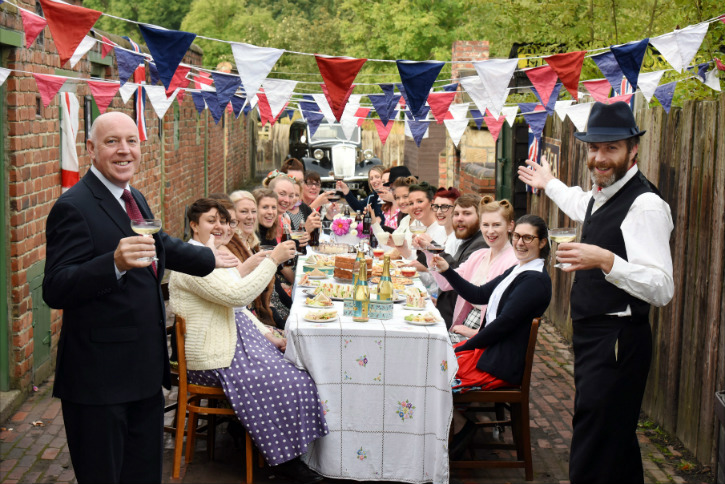
The future (or should we say the past) is bright at Beamish Museum as the county’s largest visitor attraction is set to get even bigger with the announcement of a £10.9m grant from the Heritage Lottery Fund.
At Beamish you can experience what life was like in North East England in the 1820s, 1900s and 1940s, and now more than 30 new and exciting exhibits will be added to the existing attractions over the next four years, giving you an insight into more recent times including the 1950s – including being able to stay over in a Georgian Coaching Inn at the award-winning museum.
A 1950s Town:
- Cinema: The former Grand Electric Cinema from Ryhope, in Sunderland, has been donated to the museum. It will be taken down and moved to Beamish, to be restored to its former glory.
- Community centre: A replica of the Coundon and Leeholme Community Association centre at the Leeholme Welfare Hall will help to tell the story of community life in the 1950s.
- Aged Miners’ Homes: A terrace of four aged miners’ homes from Marsden Road, in South Shields, will be copied to provide a dedicated centre for people living with dementia, their carers and families.
- Norman Cornish’s house: The former home of artist Norman Cornish, from Bishop’s Close Street, in Spennymoor, is set to be replicated, complete with his studio and furniture that he donated to the museum.
- John’s Cafe: The popular cafe, which was in Wingate, a small Durham mining village, will be recreated, featuring the interior of the original cafe, collected by the museum in 2013.
- Semi-detached houses: More than 7,000 people took part in our “Nominate Your House” vote, which chose 93-year-old Esther Gibbon’s 1950s-built home in Red House, Sunderland, to be replicated in The 1950s Town.
- Shops: Shops from Bow Street in Middlesbrough, Darras Drive in North Shields and Blackhall Rocks will be replicated.
- Airey houses: Post-war pre-fabricated Airey houses from Kibblesworth, Gateshead, were collected in 2012.
- Bowling green: Billingham Bowling Club’s green and pavilion are set to be copied, helping to share the story of 1950s leisure pursuits and community life.
- Police houses: A pair of police houses and their office will be recreated using some of the features from the original buildings in Heworth, Gateshead.
- Fish and chip shop: A fried fish shop from Middleton-St-George, near Darlington, will be replicated to serve up this popular 1950s food. A 1952 gas-powered range has been collected from Middleton-St-George.
1950s Upland Farm:
- Spain’s Field Farm in Eastgate, Weardale, is being moved stone by stone to the museum, where we plan to rebuild it to tell the story of rural life in the 1950s, an important period of change when many upland farms were being abandoned.
1820s Landscape:
- Coaching inn: Visitors will be able to stay overnight in this recreation of a “lost” Great North Road coaching inn, The Three Tuns, which once stood at Scotch Corner.
- Joe the Quilter’s cottage: The lost cottage of murdered Georgian quilter Joseph Hedley will be replicated. An excavation at the site, in Warden, near Hexham, Northumberland, has uncovered the remains of the cottage and items including a coin, metal book plate and pottery.
- 1820s industry: Early industry from the 1820s will be represented including a pottery; blacksmith, replicating a building from Washington, Tyne & Wear, and a candle house, copied from a building in Westgate, Weardale.
- Windmill: Beamish hope to recreate a windmill, Buck’s Hill post-mill, that stood in Blyth, Northumberland, after being shipped over from Sweden.
Transport:
- A trolleybus system and restored buses will transport visitors, while a Northern General bus depot will support Beamish’s work to pass on heritage engineering skills, as well as accommodating part of the transport collection.
Find out first about news, events and special offers, sign up to our e-newsletter >
Find out more about Beamish here >
Related
Comments
Comments are disabled for this post.



 to add an item to your Itinerary basket.
to add an item to your Itinerary basket.
.png)






